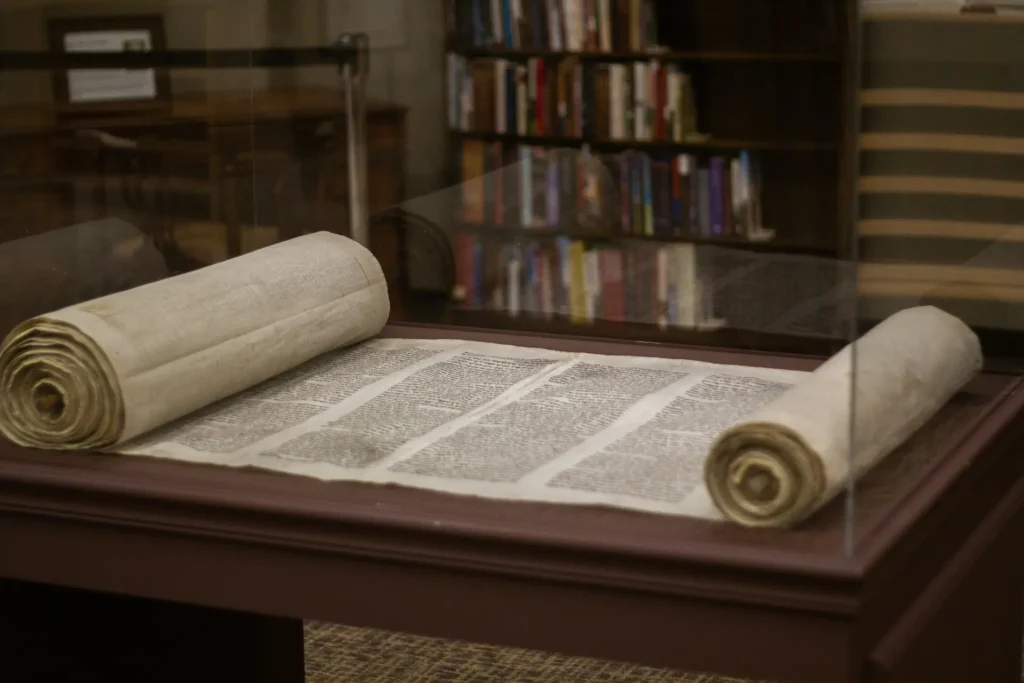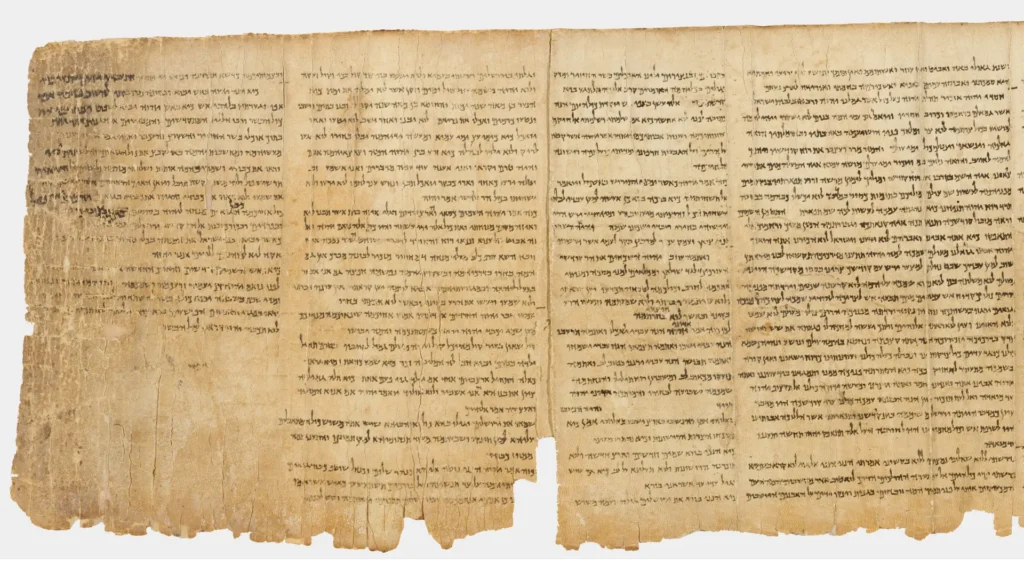The Argument For the Credibility of the Translated Bible
Can a book that has been translated countless times over two millennia still convey its original message? For many, the Bible’s credibility–that is, the assertion that the Bible still faithfully conveys its original message–is undermined by the belief that repeated translations have distorted the text’s content over time. After all, surely, when passed between flawed human hands for centuries, the sands of time will have sanded down the writers’ original intent?
However, this misconception disregards the wealth of ancient manuscripts available, the precision with which the Bible has been translated, and the consistency of the Bible’s core message across centuries. Supported by unparalleled manuscript evidence and critical textual analysis, it is evident that the Bible’s reliability is not only defensible but also a testament of its enduring significance.
In order to argue for the credibility of the Bible, it is required to acknowledge both the Old and New Testaments, and make unique arguments for each, due to their individual circumstances. The books of the New Testament were written after the death of Jesus Christ, and include the gospels: accounts of Jesus’s life and ministry, both first and second-hand. The Old Testament is arguably no less important than the New Testament, but as the section that directly focuses on Jesus–the center of Christianity–the New Testament has received the most scrutiny.
When evaluating the accuracy of modern translations of ancient writings, it might seem logical to reference the original source itself. However, by their very nature as being ancient, most autographs–the original writings of the authors–are no longer available. Instead, scholars rely on manuscripts, handwritten copies predating the printing press.
This is where the New Testament stands out. With nearly 5,800 Greek manuscripts and close to 25,000 total, including translations into other languages, the New Testament is the most well-preserved document of antiquity. By comparison, even Homer’s Iliad, with approximately 1,800 manuscripts, falls far short of the New Testament’s wealth of evidence. This is according to Dr. Clay Jones, who also notes, “Even Homer’s Iliad…is still dwarfed by the NT, which has more than three times the Greek manuscripts as the Iliad.”
The sheer number of New Testament manuscripts is pivotal in preserving its original message. If variations caused by human error occur in some copies, scholars can cross-reference the wealth of manuscripts to identify and correct discrepancies. Through the rigorous process of textual criticism, patterns are analyzed, and the original text can be reconstructed with remarkable accuracy. Moreover, the manuscripts’ closeness in date to the original autographs further enhances their reliability. As Clay Jones notes:
“Instead of a lapse of a millennium or more, as is the case of not a few classical authors, several papyrus manuscripts of portions of the New Testament are extant that were copied within a century or so after the composition of the original documents.”
Clay Jones
This directly addresses concerns raised by critics about the lack of original autographs. While it is true that the autographs are unavailable, the combination of a vast number of manuscripts and their proximity to the originals provides scholars with an unparalleled basis for reconstructing the text faithfully.
Manuscripts are not the only way to verify the New Testament, however. Aside from the Bible itself, scholars have also uncovered commentaries, sermons, and other treatises written by the early Church fathers. Within these works are a great number of patristic quotations to scripture, numbering at an approximate total of 36,000. Such extensive quoting provides a vital secondary layer of preservation as even if all known manuscripts of the New Testament were destroyed, the writings of the Church fathers alone would be sufficient to reconstruct nearly the entire New Testament. This adds another compelling layer of evidence for the reliability and preservation of the New Testament’s original message.
With such a massive amount of manuscripts, it’s only natural that a number of variants between them appear. Bart Ehrman, a famous New Testament critic and scholar, states “There are more variations among our manuscripts than there are words in the New Testament” This statement of his is technically true; indeed, the number of New Testament variants is as high as 400,000. Some critics–including Ehrman himself–view this as a sign of the New Testament being unreliable. After all, with so many differences, how does one know what is true?

It has already been stated earlier how the massive amount of variations and manuscripts can actually be used to assure the accuracy of modern translations through comparisons of the texts, but even aside from that, proponents of this view fail to acknowledge that most differences are inconsequential, involving merely small changes in grammar or punctuation. For example, according to Professor Daniel B. Wallace, the phrase, “Jesus loves Paul,” can be ordered more than 16 different ways in the Greek language and still have the same meaning. In fact, only about 1% of the textual variants can be considered truly meaningful.
Additionally, according to Timothy P. Jones “When variations in the text of Acts are compared in the two most dissimilar ‘families’ of New Testament manuscripts, the level of consensus between the text types is 92%; a similar comparison of the letters of James, Peter. John, and Jude yields 93% agreement, leaving very little of the text in question”. This shows that the variations between texts are not nearly as consequential as some critics would make them out to be.
While the New Testament stands out as the best-preserved ancient text, the Old Testament’s preservation is equally remarkable, despite being of even greater age than the New Testament. This is evident thanks to the meticulous efforts of Jewish scribes, the discovery of the Dead Sea Scrolls, and archaeological evidence.
The reliability of the Old Testament is strongly supported by the remarkable consistency between the Dead Sea Scrolls and the later Masoretic texts. Written by the Masoretes, when the Dead Sea Scrolls were discovered and analyzed, they revealed that the text of the Old Testament had remained far more stable over the centuries than many scholars had previously imagined.
For example, a scroll of Isaiah produced at least a century before the time of Jesus was found to be virtually identical to the Masoretic texts, which were copied over a thousand years later. This consistency demonstrates the care with which Jewish scribes preserved their sacred texts. In fact, the Masoretes, a group of Jewish scholars active near the end of the fifth century A.D., developed a system–one built off of the earlier system and guidelines made by the Sopherites before them–of “marginal markings and vowel points” to order to “preserve the ancient readings of the texts that they received”.
Even later, Christian copyists, while likely not counting words or letters in the texts they copied, implemented informal but orderly practices to safeguard their sacred writings. While the scroll of Isaiah and the Masoretic texts may have been nearly identical, the rest of the Dead Sea Scrolls did reveal a variety of variations in other Old Testament texts. However, none of these changes altered the overall message of the Bible or affected the theological beliefs derived from the texts. In fact, according to Josh McDowell, comparisons of texts “proved to be word-for-word in more than 95 percent of the cases, and the 5-percent variation consists mostly of slips of the pen and spelling”. These findings affirm the remarkable stability and reliability of the Old Testament text over millennia.

The credibility of the Old Testament is further supported by its remarkably accurate historical details. An example of this can be found in its preservation of names of ancient kings. Professor Robert Dick Wilson, a doctor of philosophy, divinity, and an old testament scholar, observed that Old Testament Hebrew manuscripts contain references to obsolete kings whose existence has only recently been confirmed through archaeological discoveries. This precision stands in stark contrast to other ancient records, such as the works of Manetho–an Egyptian high priest in the time of Ptolemy Philadelphus–recording the dynasties of Egyptian kings, which have suffered significant corruption or loss over time.
Maintaining such accuracy in historical records for over 2,000 years would not have been possible without meticulous copying practices This strongly suggests that the Old Testament manuscripts were transmitted with substantial correctness, ensuring that key historical details from the original texts were preserved through the generations. Such evidence bolsters the argument that the Old Testament translations we have today are rooted in reliable and accurate sources.
In conclusion, the Bible’s reliability is substantiated by an extraordinary breadth of manuscript evidence, rigorous scholarly analysis, and archaeological discoveries. The New Testament, as the best-preserved ancient text, has been transmitted with remarkable accuracy, allowing scholars to reconstruct its original message with confidence. Similarly, the Old Testament’s consistency across millennia, demonstrated through the Dead Sea Scrolls, Masoretic texts, and corroborative archaeological evidence, testifies to the meticulous care of its scribes.
Contrary to the assumption that repeated translations have distorted the Bible, the evidence shows that its core message has been preserved with unparalleled fidelity. The enduring reliability of the Bible is not merely a testament to ancient scribes’ diligence but also to the timeless significance of the Scriptures themselves. Whether examined from historical, linguistic, or theological perspectives, the Bible’s preservation underscores its unique place as a source of truth, faith, and enduring wisdom.
This article comes to us from Johnluc Moore, my youngest son, written as an English assignment during his 12th grade year.
As you can imagine – I am very excited to share his work with you all and I am equally pleased that he agreed to allow me to publish it. I am hoping I will be able to share more from him in the future.
References:
Jones, Clay. “The Bibliographical Test Updated” Christian Research Journal, vol. 35, no. 3, 2012, https://www.equip.org/articles/the-bibliographical-test-updated/.
Wallace, Daniel Baird. “The Gospel According to Bart: A Review Article of Misquoting Jesus by Bart Ehrman” Journal of the Evangelical Theological Society, vol. 49, no. 2, June 2006, pp. 327–349, https://etsjets.org/wp-content/uploads/2010/06/files_JETS-PDFs_49_49-2_JETS_49-2_327-349_Wallace.pdf.
Jones, Timothy P. Why Should I Trust the Bible? Christian Focus, 2019.
McDowell, Josh. The New Evidence That Demands a Verdict: Fully Updated. Thomas Nelson, 1999.




